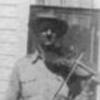Annotation:Hog Eye (1): Difference between revisions
*>Move page script m (moved Talk:Hog Eye (1) to Annotation:Hog Eye (1)) |
m (Text replace - "[[{{BASEPAGENAME}}|Tune properties and standard notation]]" to "'''Back to [[{{BASEPAGENAME}}]]'''") |
||
| Line 1: | Line 1: | ||
[[{{BASEPAGENAME}} | '''Back to [[{{BASEPAGENAME}}]]''' | ||
---- | ---- | ||
<p><font face="garamond, serif" size="4"> | <p><font face="garamond, serif" size="4"> | ||
| Line 64: | Line 64: | ||
<br> | <br> | ||
---- | ---- | ||
[[{{BASEPAGENAME}} | '''Back to [[{{BASEPAGENAME}}]]''' | ||
Revision as of 08:11, 4 April 2012
Back to Hog Eye (1)
HOG EYE [1]. AKA - "Hog-Eyed Man." AKA and see "Betty Martin," "Brad Walters," "Chippy Get Your Hair Cut," "Gippy Get Your Hair Cut," "Hippy Get Your Haircut," "Fire on the Mountain (1)," "Fire in the Mountain (1)," "Granny Will Your Dog Bite? (1)," "High Betty Martin," "Old Mother Gofour," "Pretty Betty Martin," "Sally in the Garden (1)," "Tip Toe Fine," etc. Old-Time, Breakdown. USA; Kentucky, Mississippi, Arkansas. A Mixolydian (Beisswenger & McCann, Phillips): A A Dorian (Kaufman). Standard tuning (fiddle). AAB (Brody): AABB (Kaufman, Phillips). This melody seems to have been played as much in the major mode as in the mixolydian.
The term 'hog-eye' means perhaps 'wall-eyed' (i.e. eyes that diverge outwards, the opposite of cross-eyed), according to Thede, and indeed it is confirmed that that usage is heard in parts of the United States. Apparently 'hog-eye' was a slang term (for some unknown reason) for a type of barge employed by 49ers in the California gold fields in the mid-1800's. An 1870 publication called Whall Sea Songs says that "[Around San Francisco] there was a great business carried on by water, the chief vehicles being barges, called 'hog-eyes.'" (Random House Historical Dictionary of American Slang). Reginal Nettle, writing in his book Sing a Song of England (1954), assumes that 'hog-eye' is associated with 'ditch-hogs', or river sailors, who were held in contempt by blue-water men, "but the river traffic of the Mississippi-Missouri Valleys nevertheless opened up the Middle West of the U.S.A., and provided the quick transport necessary for the economic expansion...Railways and aircraft are merely carrying on there the work the 'ditch-hogs' started" (p. 116). 'Hog-eye' also appears to have been a euphemism for female genitalia (see note for Bayard's "Hog Eye an' a 'Tater"), as documented by Gerson Legman in Roll Me in Your Arms, vol. 1 of Vance Randolph's "unprintable" Ozark folksongs and folklore:
...a 'Hog-Eye Man' means a wharf roustabout or idler, usually Negro, who is always 'just hangin' around,' looking for appetizing kitchen hand-outs and especially for sexual opportunities; often called 'Jody' (the adulterer) in and since World War II, in Negro 'toasts' and brag-songs. *Hog-Eye* means, gallantly, the vagina, not to be confused with 'dead-eye,' meaning the anus.
Musicologist Samuel Bayard, prints the following stanza, also commenting that "Hog Eye" has an indecent meaning:
As I was going down the street
A pretty girl I chanced to meet,
I stepped right up and kissed her sweet,
And asked her for some hog-eye meat.
There are several tunes that are quite similar to each other and to this one: "Betty Martin," "Old Mother Gofour," "Granny Will Your Dog Bite," and "Fire on the Mountain." See Bayard's (Dance to the Fiddle, 1981, No. 60, p. 43). The melody was in the repertoire of Ky. fiddlers Luther Strong and Bill Stepp as "Hog-Eyed Man," and was recorded under this title in 1939 by Herbert Halpert for the Library of Congress from the playing of Lauderdale County, Mississippi, fiddler Stephen B. Tucker.

Sally's in the garden sifting, sifting,
Sally's in the garden sifting sand;
Sally's in the garden sifting, sifting,
Sally's upstairs with the hog-eyed man.
Sally will your dog bite? No, sir, no,
Daddy cut his biter off a long time ago.
Chicken in the bread pan kicking up dough,
Sally will your dog bite? No, sir, no;
Sally in the garden sifting sand,
Sally upstairs with the hog-eyed man.
There is perhaps another, musically unrelated, "Hog-Eye Man" that developed as a shanty song, as contained in Botkin's Treasury of American Folklore (p. 836).
Source for notated version: The Arkansas Sheiks (Kuntz); Tony Marcus [Phillips]; fiddler John Chism with Pope's Arkansas Mountaineers [Beisswenger & McCann].
Printed sources: Beisswenger & McCann (Ozarks Fiddle Music), 2008; p. 175. Brody (Fiddler's Fakebook), 1983; p. 136. Kaufman (Beginning Old Time Fiddle), 1977; p. 93. Kuntz (Ragged but Right), 1987; p. 299-300. Phillips (Traditional American Fiddle Tunes), vol. 1, 1994; p. 113.
Recorded sources: Bay 204, The Arkansas Sheiks- "Whiskey Before Breakfast." County 518, Pope's Arkansas Mountaineer's- "Echoes of the Ozarks, vol. 1" (1995). County 2730, Rafe Stefanini - "Glory on the Big Spring." Folkways FA 2398, New Lost City Ramblers- "vol. 3." Kanawha 311, "Hollow Rock String Band." Rounder CD1518, Various Performers - "American Fiddle Tunes" (1971). Victor 21295 {78 RPM}, Pope's Arkansas Mountaineers.
See also listing at:<be>
Jane Keefer's Folk Music Index: An Index to Recorded Sources [1]
Hear Luther Strong's 1935 LOC recording at Juneberry 78's [2]
Back to Hog Eye (1)
